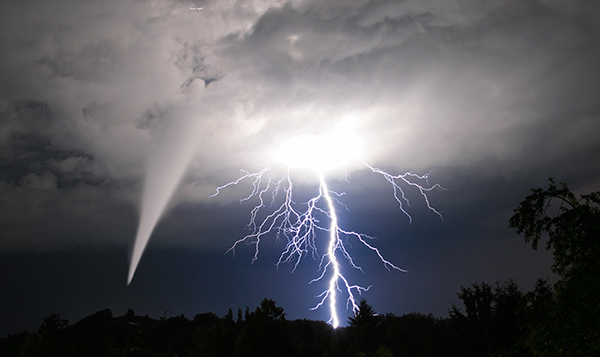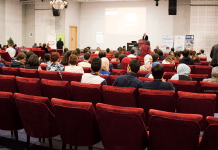
Protection Against Natural Hazards
With growing populations around the world, the societal impacts of naturally-occurring hazards are increasing. Natural hazards can be subdivided into geophysical hazards (landslides, earthquakes and volcanoes) and hydro-meteorological hazards (storms, flooding and droughts). All of them however are capable to cause massive destruction on human settlements and infrastructure.
Scientific approaches can provide protection by: (a) improving forecasting and assessments of the timing, duration and size of hazardous events, by (b) using technological advances to provide early warning and monitoring of the impacts of these events, and by (c) developing new means to mitigate the worst impacts.
For example, the Volcanic Ash Advisory Centres (VAAC) is an international network of experts responsible for disseminating information on atmospheric volcanic ash clouds that might endanger aviation. Scientists are currently exploiting unmanned autonomous vehicles to rapidly provide critical damage information in the aftermath of a disaster to assist in rescue and recovery.
Scientific approaches can provide protection by: (a) improving forecasting and assessments of the timing, duration and size of hazardous events, by (b) using technological advances to provide early warning and monitoring of the impacts of these events, and by (c) developing new means to mitigate the worst impacts.
For example, the Volcanic Ash Advisory Centres (VAAC) is an international network of experts responsible for disseminating information on atmospheric volcanic ash clouds that might endanger aviation. Scientists are currently exploiting unmanned autonomous vehicles to rapidly provide critical damage information in the aftermath of a disaster to assist in rescue and recovery.
Climate Change: Many predictions for the future weather in Europe point to the increased occurrence of extreme weather events such as heatwaves, droughts and outbursts of intense rainfall. This means we may have to rapidly improve how we can forecast, protect and mitigate.
Vulnerability And Natural Hazards: Environmental geographers argue that there is no such thing as a natural disaster and that the impact of hazardous events is mainly controlled by the social vulnerabilities of the population at risk. Pre-existing social inequalities are amplified by the occurrence of these events.
Learning The Lessons Properly: Our scientific understanding of hazardous events will only be improved if we properly understand the contributing factors in creating past events. This is complex, and involves a need to understand both the dynamic physical processes that led to the development of the hazard along with the social processes before, during and after the event.
Volcanic Eruptions, STREVA, Landslides, Weather forecasting, Natural disaster preparedness, Tornados, Thunderstorms, Hurricanes, Earthquakes




